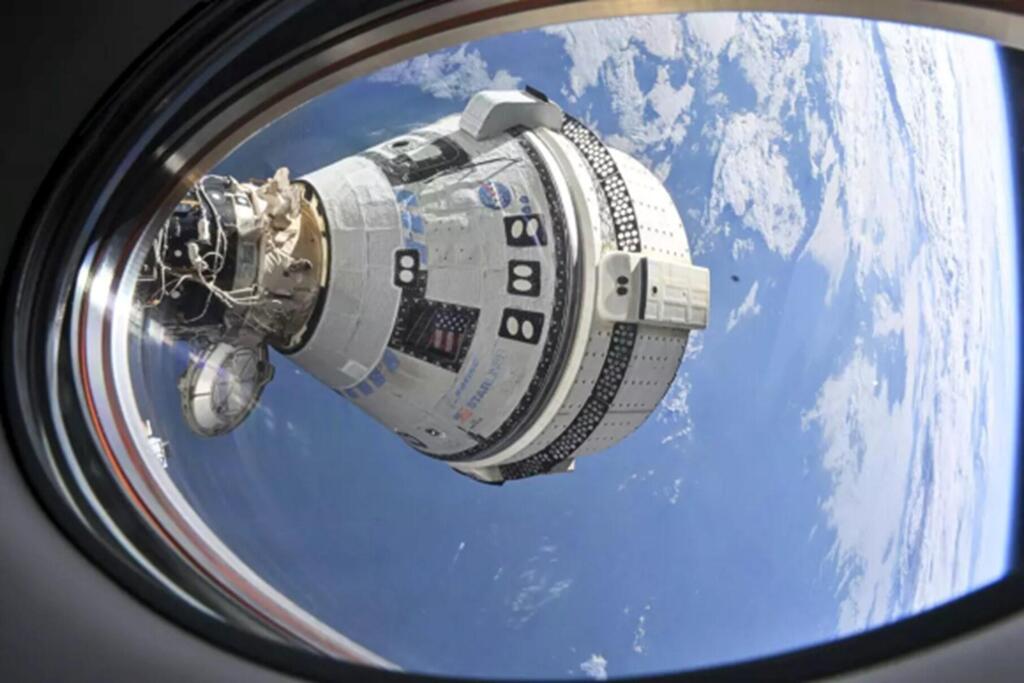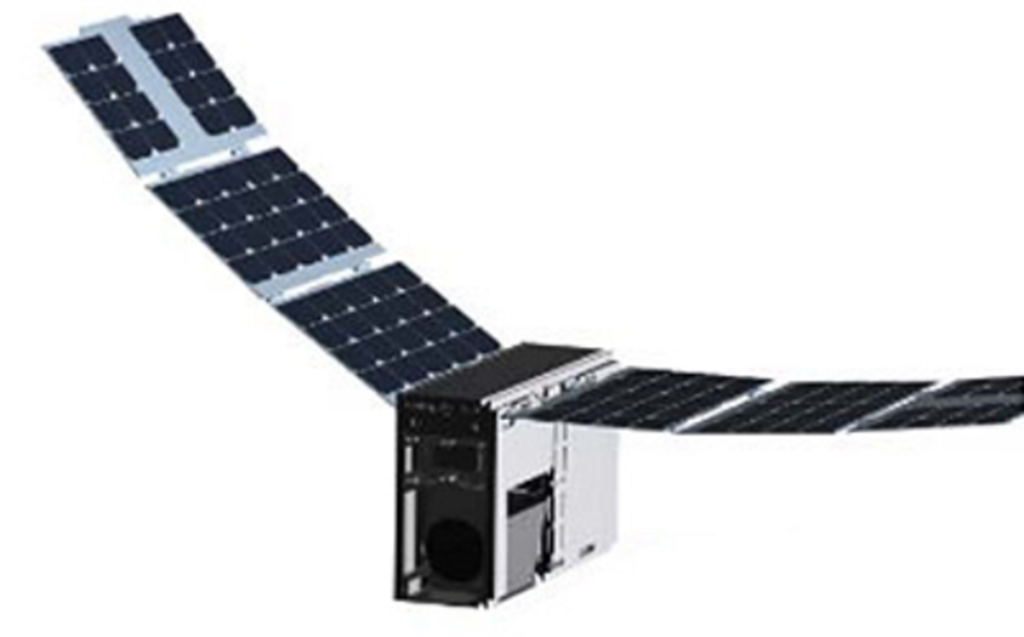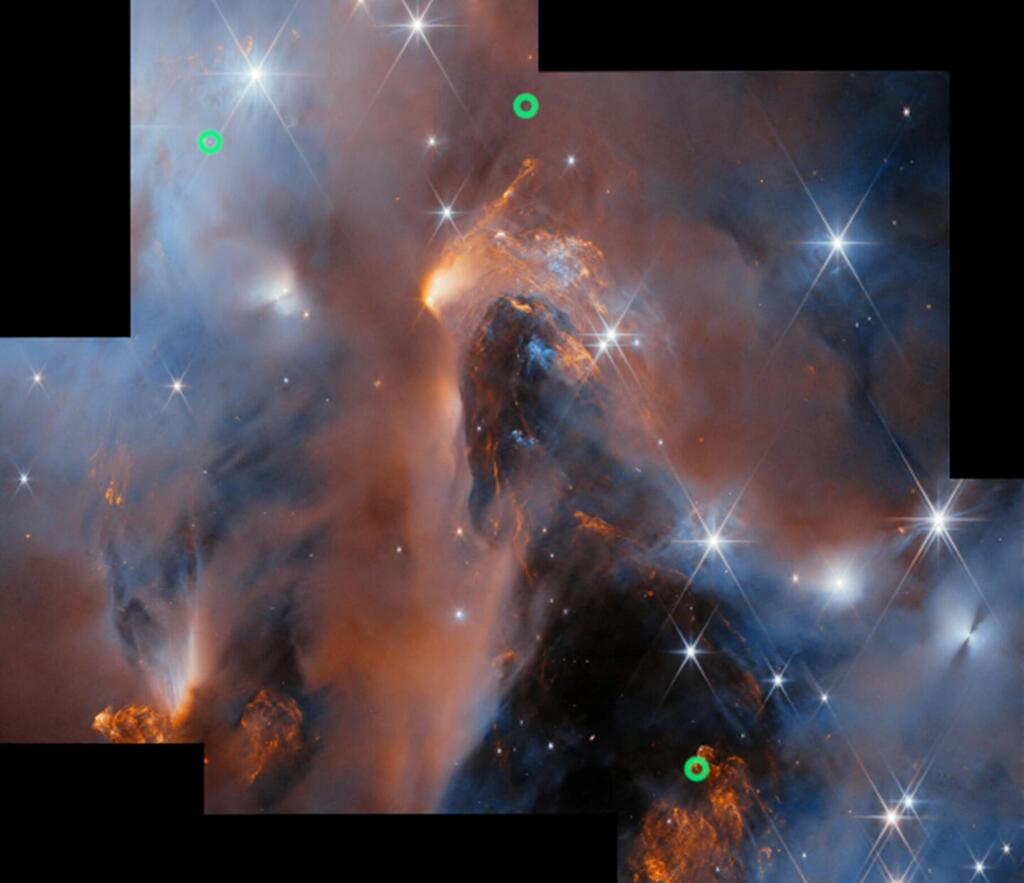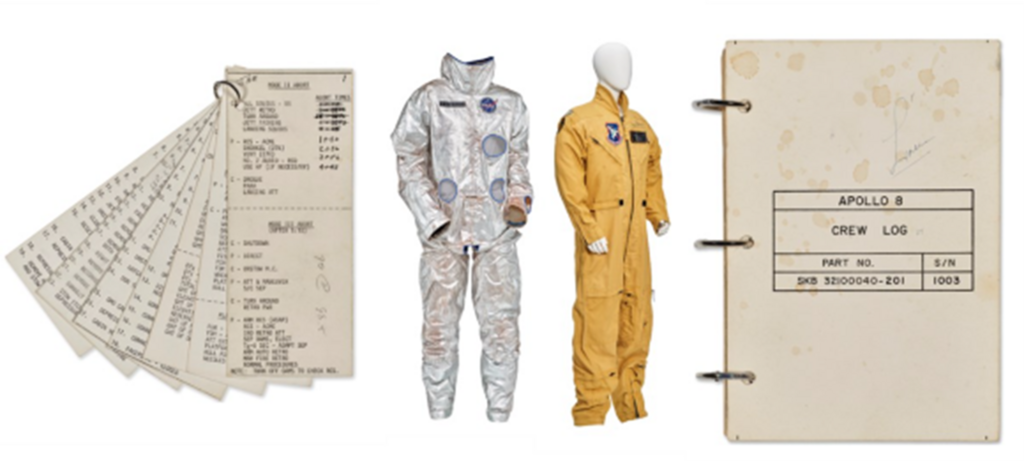The delay of Polaris and SpaceX’s setback
The historic private mission, Polaris Dawn, was initially scheduled to launch at the beginning of last week, but its launch has been postponed several times and is now scheduled to take place on Friday. The first delay was due to a malfunction in one of the spacecraft's refueling pipes, followed by further postponement in light of concerns over the weather forecast.
SpaceX, which is managing and launching the mission, was concerned about potential stormy weather conditions in the Gulf of Mexico at the scheduled landing time, which will be five days after the launch.
At present, the mission is set to launch on Friday morning. Jared Isaacman, the mission commander and its financier, tweeted last Tuesday, "Our launch criteria are heavily constrained by forecasted splashdown weather conditions. With no ISS rendezvous and limited life support consumables, we must be absolutely sure of reentry weather before launching."
Meanwhile, another complication has arisen: a rare malfunction occurred in the first stage of a SpaceX Falcon 9 rocket, which exploded upon landing. SpaceX launches dozens of Falcon 9 rockets annually and reuses the first stage for subsequent launches after it performs a vertical soft landing at the launch site or on a designated barge at sea. The first stage, designated booster 1062, which was launched last Wednesday from Cape Canaveral, Florida, had been in use for nearly four years and had successfully completed 22 previous launches.
Return to flight of the Falcon 9 booster rocket is based on the FAA determining that any system, process, or procedure related to the anomaly does not affect public safety
However, the 23rd landing did not end successfully. The rocket was launched for a routine mission to deploy Starlink satellites into space, and the first stage completed its task without a hitch, landing on the barge "A Shortfall of Gravitas" in the Atlantic Ocean. Immediately upon landing, it caught fire, tilted to its side, and exploded. Fortunately, no one was injured, and the only damage was the loss of the rocket itself.
SpaceX notes that this is the first time a Falcon 9 first stage has exploded upon landing after an impressive streak of 268 successful landings, although this count includes a December 2023 landing on a barge, after which the rocket tipped into the water and sank.
As with all such incidents, the Federal Aviation Administration (FAA) has opened an investigation. The FAA stated that, for now, SpaceX is prohibited from conducting further launches. “A return to flight of the Falcon 9 booster rocket is based on the FAA determining that any system, process, or procedure related to the anomaly does not affect public safety,” the FAA explained.
However, they noted that the launch freeze would not necessarily last until the end of the investigation. Indeed, on August 30th, the FAA announced that it would allow launches to resume while the investigation continues, and Falcon 9 launches resumed the very next day.
Only in July of this year, the FAA suspended Falcon 9 launches for about two weeks following a rare malfunction in the second stage of the launch rocket, during another mission to deploy Starlink satellites. In that case, the malfunction was caused by an oxygen leak from the rocket's fuel tank. While two such malfunctions in less than two months are concerning, they do not necessarily suggest a systemic issue within a company that has so far demonstrated an impressive safety record.
The Polaris Dawn mission is also set to be launched on a Falcon 9 rocket, carrying the Dragon spacecraft and four private astronauts. Independent of the external investigation, SpaceX is working to determine the cause of the malfunction that led to the loss of the rocket, costing the company millions of dollars. There is also the potential for further financial impact if the incident causes delays to other missions.
Boeing's failure
After more than two months of deliberation, NASA announced last Saturday that Boeing's crewed spacecraft, the Starliner, would not complete its test flight and would return to Earth empty. The agency was not confident that the spacecraft was safe enough to bring back the two astronauts, Sunita Williams and Barry Wilmore, who flew it to the ISS. Originally scheduled for an eight-day stay in June, Williams and Wilmore will now remain on the station for eight months, returning only in February 2025, aboard SpaceX's Dragon spacecraft.
This decision affects not only Williams, Wilmore, and their families but also two of the four astronauts who were supposed to be part of NASA's ninth crew mission to the space station on SpaceX's Dragon spacecraft. The two will remain on Earth to leave two seats available on the spacecraft for the return of the stranded crew members.
The launch of the ninth crew, initially planned for August, was postponed to late September. This delay allows NASA to reorganize the spacecraft, make room for two additional astronauts, send them personal equipment for their extended stay, and prepare SpaceX spacesuits, as Boeing's suits are not compatible with the Dragon spacecraft. This situation highlights a need for NASA to consider more flexible coordination with private companies flying astronauts, especially in emergencies.
Decision to proceed with Boeing's Starliner launch despite known issues has left NASA reliant on a single company, SpaceX
However, the biggest loser from NASA's decision is Boeing itself. The company has already reported losses of over $1.6 billion on the Starliner project. Even if NASA grants Boeing another chance for a crewed test flight, it will likely take at least one to two years, during which time Boeing will need to continue investing in the venture, without the anticipated revenues from transporting astronauts for the space agency.
Veteran space commentators, like journalist Clive Irving, suggest that Boeing's setback could undermine NASA's confidence in the company and damage their collaborations on other projects, most notably the Artemis program. Boeing is the manufacturer of the Space Launch System (SLS), the giant launch rocket intended to take humans back to the Moon. However, the rocket was considered outdated even before the program began and was chosen for the mission for political reasons rather than technical merits.
NASA is also impacted by this situation. The decision to proceed with Boeing's Starliner launch despite known issues discovered before liftoff has left NASA reliant on a single company, SpaceX, for crewed spaceflights, with SpaceX gradually becoming a formidable space monopoly.
4 View gallery


A severe blow to the prestige of the aviation giant, which could leave NASA with a monopoly on manned space flights. The Starliner spacecraft docked at the International Space Station
(Photo: NASA)
A successful Israeli landing on the moon – in a simulator
The Bereshit 2 mission, led by the SpaceIL organization, continues to face financial challenges, but this week marked a small step forward toward a successful lunar landing. The team completed a simulated landing process, developed in collaboration with the Israeli company Sim.space, whose two founders were also involved in the Bereshit 1 mission, which ended with the crash of the Israeli spacecraft on the moon.
“The simulation we conducted included all stages of the autonomous landing, from detachment from the mother spacecraft at an altitude of 40 kilometers above the lunar surface to a successful touchdown, with all landing parameters carefully modeled by the simulator,” explained Moshe Medina, Director of the Bereshit 2 program, in an interview with the Davidson Institute website. “So far, the simulation has only been run on a computer. In the coming months, we will begin integrating the simulator into our hybrid lab, where we will test and validate components and systems of the landers themselves.”
For the Bereshit 2 mission, SpaceIL plans to deploy two identical landers on the Moon’s surface — one on the near side and the other, if all goes well, on the far side. The mother spacecraft, which will carry the two landers, will remain in lunar orbit and continue its mission after the landers have completed their tasks. The initial simulation focused on a landing on the near side under optimal conditions, without any malfunctions.
"This simulation also served as a test run for the simulator itself, allowing us to calibrate and verify that it accurately simulates the mission. In future stages, we will run simulations of more challenging landings and various malfunctions, such as sensor failures. One of the lessons from Bereshit 1 was the importance of starting simulations in the hybrid lab as early as possible," Medina added.
A little over a year ago, the Bereshit 2 mission encountered budgetary difficulties after the main group of donors reduced their support for the project. The organization's board of directors approved continuing work on the mission at a limited scale until the end of 2024, hoping to secure by then additional funding for further development, which has not yet materialized.
“We are working to secure government funding, seek another country as a partner, and attract additional donors. If donors see that we have government support and international partnership, it naturally makes it easier for them to contribute,” Medina said. “We are making progress on all three fronts, and we hope to succeed.”
The Road to the Moon for the Second Time – A video by SpaceIL featuring a simulation of the Bereshit 2 mission:
Forecast from the microwave: Tomorrow.io expands satellite network
About two weeks ago, the weather forecasting company Tomorrow.io launched two additional satellites to expand its forecast satellite network. Founded by Israelis and operating a development center in Israel, the company now manages a network of four satellites — two radar satellites launched last year, and the two new microwave satellites, deployed on SpaceX's Transporter 11 mission, along with 114 other small satellites.
The new microwave satellites are relatively small, roughly the size of a shoebox. Technically, they are classified as 6U, meaning they consist of six cubic units, each measuring 10x10x10 cm. These satellites transmit microwave radiation, which has shorter wavelengths than radio waves, typically within the 20 to 200 GHz frequency range. Specific wavelengths in this range are absorbed by atmospheric water vapor, while others are absorbed more when the atmosphere is rich in ice particles.
Thus, measurements of wave reflections allow for precise measurements of both atmospheric humidity and temperature. By analyzing wave reflections over a wide area, the satellites help assess movements and changes in these parameters. This data will be integrated with measurements from other satellites within complex models, supported by artificial intelligence analysis, to provide the most accurate weather forecast possible.
“The satellites are currently in the testing and calibration phases, and they are expected to start providing data soon,” said Rei Goffer, Co-Founder of Tomorrow.io and its Chief Strategy Officer. “This technology allows us to capture atmospheric data with exceptional accuracy, especially over oceans and remote areas where traditional observations are scarce. With our microwave sounders, we can set a new standard in atmospheric data collection and prediction.”
The company has not disclosed the cost of the new satellites. However, these two microwave satellites are just one part of a broader satellite array that Tomorrow.io plans to launch in the coming years to establish itself as the leading private entity in weather forecasting — a domain previously dominated by state-run or military institutions.. Last year alone, the company raised over $100 million from investors and secured several major contracts, including a significant tender to provide forecasting services to the U.S. Department of Defense. The new satellites are expected to remain operational in space for several years.
4 View gallery


Shoebox-sized satellites set to enhance weather forecasting. MS-1 satellite by Tomorrow.io
(Photo: Tomorrow.io)
Six worlds in search of a sun
Researchers observing the sky with the James Webb Space Telescope have identified six celestial bodies at a great distance from us, with masses comparable to large planets, yet they do not appear to orbit any star. The team, comprising scientists from the United States, Canada, France, and Portugal, identified these bodies in the young nebula NGC 1333, located in the Perseus constellation about a thousand light-years away. This nebula is a region where many new stars are formed, and the researchers estimate that the celestial bodies they discovered - each with a mass five to ten times that of Jupiter - did not accumulate enough mass to become stars themselves.
It turns out the smallest free-floating objects that form like stars overlap in mass with giant exoplanets circling nearby stars.
"We used Webb's unprecedented sensitivity at infrared wavelengths to search for the faintest members of a young star cluster, seeking to address a fundamental question in astronomy: How light an object can form like a star?" said Ray Jayawardhana, the head of the astrophysics research team and Johns Hopkins University Provost. "It turns out the smallest free-floating objects that form like stars overlap in mass with giant exoplanets circling nearby stars."
The researchers also identified a dust disk around one of the smallest of the six objects. Stars, like our Sun, form when the rotation of such a disk gathers sufficient mass to initiate a process of hydrogen fusion. Planets form from the leftover gas and dust not consumed by the star itself. The presence of a disk around a star-like object with a mass five times that of Jupiter — or 1,600 times that of Earth — suggests it formed through a similar process, but there was insufficient mass in the disk to trigger hydrogen fusion and thus form an energy-emitting star.
While free-floating celestial bodies are very rare in the Milky Way, the researchers' findings, detailed in a paper accepted for publication in The Astronomical Journal, indicate a high concentration of such objects in the region of young stars that formed the focus of the study. This discovery could further enhance our understanding of how stars are formed — and the conditions under which they do not form
4 View gallery


Lost somewhere between a star and a planet. Three of the sunless worlds, highlighted in green, in an image of the NGC 1333 cloud, created from processed photos by the James Webb Space Telescope Source: ESA/Webb, NASA & CSA, A. Scholz, K. Muzic, A. Langeveld, R. Jayawardhana
(Photo: ESA/Webb, NASA & CSA, A. Scholz, K. Muzic, A. Langeveld, R. Jayawardhana)
Souvenirs from space
A remarkable collection of scientific and historical space artifacts is currently up for auction, featuring many unique items that once belonged to Paul Allen, the co-founder of Microsoft (along with Bill Gates). Allen, who passed away in 2018, devoted a significant portion of his life and considerable wealth to amassing a diverse array of history of science and space exploration memorabilia. The auction is being conducted in three phases, two online and one at Christie’s auction house.
Highlights of the collection include astronaut Ed White’s spare spacesuit from the Gemini 4 mission — during which White became the first American to perform a spacewalk — with an estimated starting price of 80,000 to 120,000. Also up for sale is the original mission checklist from that spacewalk (estimated at 60,000 to 80,000), Jim Lovell's flight logbook from the Apollo 8 mission (60,000 to 80,000), a training suit worn by astronaut Edwin "Buzz" Aldrin, one of the first two humans to walk on the moon (100,000 to 150,000), a page from Aldrin's Apollo 11 mission checklist with his handwritten notes (20,000 to 30,000), and a flight suit belonging to astronaut Gus Grissom, who perished alongside White in the Apollo 1 spacecraft fire (10,000 to 15,000). The auction also features models of spacecraft and rockets used by NASA, as well as drawings, paintings, and original space illustrations.
4 View gallery


From left: Ed White’s mission checklist, his Gemini 4 mission spacesuit, Buzz Aldrin's training suit, and the Apollo 8 mission logbook
(Photos: christies.com)
In addition to space-related artifacts, the collection includes several significant scientific items unrelated to space, such as an original Enigma machine from Nazi Germany, the original letter in which Albert Einstein warned U.S. President Franklin D. Roosevelt about the potential of Nazi Germany possessing nuclear weapons, letters from primate research pioneers Louis Leakey, Dian Fossey, and Jane Goodall, a photograph of the original model of the DNA double helix signed by James Watson and Francis Crick, historical computers, documents, artworks, and even an original menu from the Titanic.
While many museums are eager to acquire items from the collection, it is more likely that most will end up in the private collections of wealthy individuals, whose financial resources surpass those of public institutions. However, there is hope that some buyers may choose to donate or lend these artifacts to museums for public display.
- Content distributed by the Davidson Institute of Science Education.
First published: 17:58, 09.09.24

